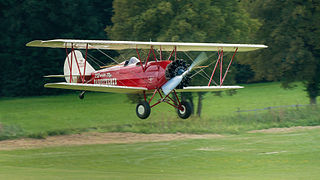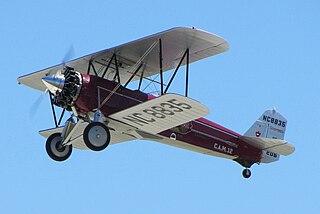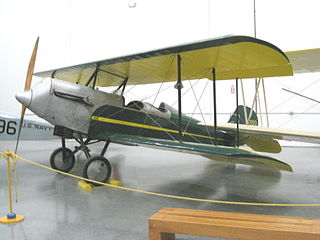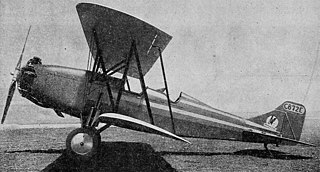
The Arrow Sport was a two-seat sporting biplane aircraft built in the United States in the 1920s and 1930s.

The Travel Air 2000/3000/4000 (originally, the Model A, Model B and Model BH were open-cockpit biplane aircraft produced in the United States in the late 1920s by the Travel Air Manufacturing Company. During the period from 1924–1929, Travel Air produced more aircraft than any other American manufacturer, including over 1,000 biplanes. While an exact number is almost impossible to ascertain due to the number of conversions and rebuilds, some estimates for Travel Air as a whole range from 1,200 to nearly 2,000 aircraft.

The Kreider-Reisner Challenger was an American utility biplane aircraft designed and produced by the Kreider-Reisner Aircraft Company, which was later taken over by the Fairchild Aircraft Company.

The International F-17 Sportsman was a 1920s American three-seat open-cockpit biplane designed and manufactured by the International Aircraft Corporation in Long Beach, California and Cincinnati, Ohio. 107 aircraft were built, 77 of them at Cincinnati.

The Brunner-Winkle Bird was a three-seat taxi and joy-riding aircraft produced in the US from 1928 to 1931.

The Lincoln-Page PT was an American open-cockpit two-seat single-bay biplane trainer aircraft produced from 1929 to 1931.

The Swallow TP was a trainer aircraft produced by the Swallow Airplane Company in the United States from 1928.

The Stearman C3 was an American-built civil biplane aircraft of the 1920s, designed by Stearman Aircraft of Wichita, Kansas. It was also the first Stearman aircraft to receive a type certificate.

The American A-1 and A-101 were American two and three-seat biplanes of the 1920s.

The Eaglet 31 was a United States two-seat tandem ultra-light high-winged monoplane of the early 1930s. Intended as a low-cost aircraft, its limited production run relegated it to a footnote in aviation history.

The Waco 9 is an American-built three-seat biplane design that first flew in 1925.

The Kreider-Reisner KR-21-A was a 1928 American two-seat biplane. It was designed and built by the Kreider-Reisner Aircraft Company of Hagerstown, Maryland. Fairchild Aircraft took over Kreider-Reisner in 1929 and continued to build them, as the Fairchild KR-21, later the Fairchild 21.

The Thaden T-2 was a 1920s American four-seat all-metal cabin monoplane built by the Thaden Metal Aircraft Company of San Francisco, California, USA.
The Mercury Chic T-2 was a lightweight American parasol wing monoplane designed and built by the Mercury Aircraft Inc. in the late 1920s. Flown for the first time in 1928, about 27 were built, but due to the early 1930s economic depression only 15 were sold, and the rest were scrapped.

The Thunderbird W-14 was a small, three seat American passenger transport, first flown in 1926, entering production, significantly improved, in 1927 with several different engine options. About 40-50 were built before the financial collapse of the company in 1929.

The Laird LC-B was a three seat, single-engined biplane, built for private owners in the U.S. in the late 1920s and offering a variety of engines. About 35 had been built before production ceased in the mid-1930s. Two have been restored to flight.
The Simplex Red Arrow was a US single-engined monoplane produced in the late 1920s and early 1930s and intended as club machine or mail transport. Most used radial engines in the 90–110 hp (67–82 kW) range. They carried one or two passengers whose seats could be open or enclosed. One variant, the Red Arrow Dual Plane, was easily converted from monoplane to biplane and was available with two versions of the much more powerful Wright Whirlwind engines. In all about 20 were built.

The American Eagle Phaeton was an American three seat, single engine sports biplane produced from 1929 until American Eagle failed financially in 1932. About 34 were built.

The Wallace Touroplane was a late 1920s U.S. three seat, high wing cabin monoplane. About 20 were built.

The Ireland Neptune was a four or five place pusher configuration biplane sold in flying boat and amphibian versions. Designed in the U.S. and first flown in 1927, well over 50 were built.



















